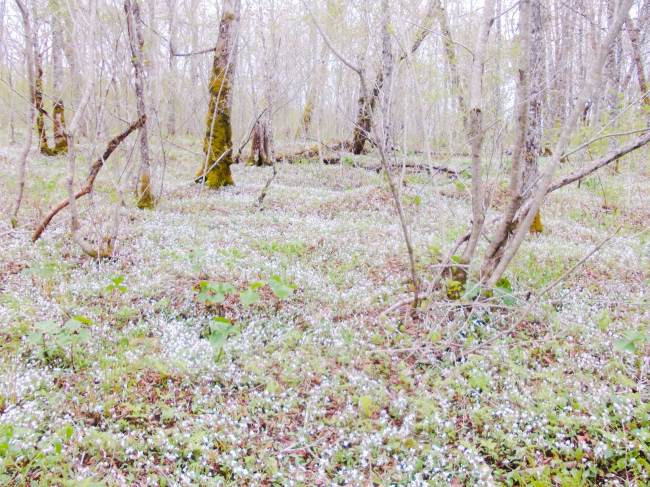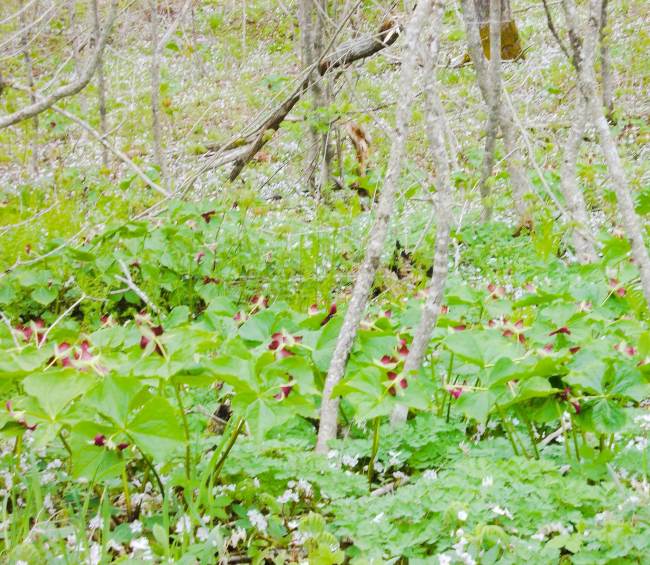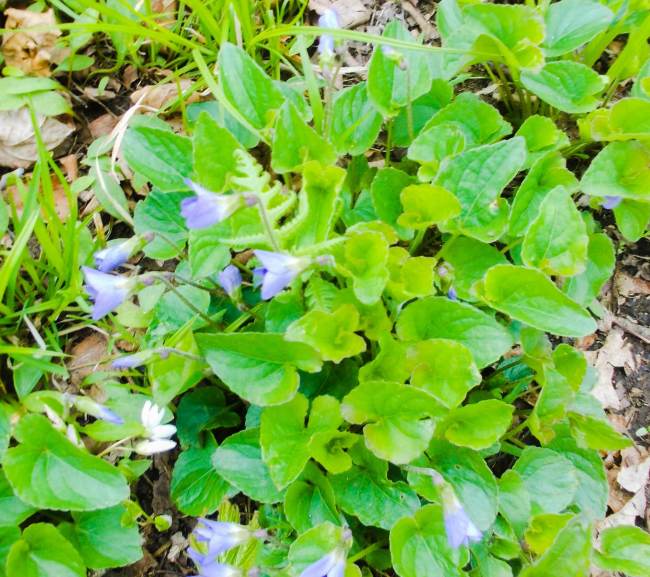The last time we visited Cape Split was in October 2012. What a thrill it was to hike this week-end and see the spring flowers.
The forest floor was white with these little white flowers. They had 5 petals and looked a bit like wood anemones. I think they are called Grass of Parnassus.
I love the vibrant pink of the Purple Trillium. Cape Split must have the most specimens I have seen anywhere. There were hundreds of plants!
I photographed the old broken tree last time, but it has now lost one of its huge branches.
The white and yellow flower is called Dutchman’s Breeches. Seemingly, the flowers look like little pantaloons (upside down), hanging on a clothes line.
Of course the violets added colour everywhere.
At the end of the trail is Cape Split itself. The trail opens into a meadow and looks out over the Bay of Fundy. This is where we always sit to have our picnic and watch the seabirds.
The seagulls seemed to be happy that they were on an island.
There was more colour to be seen as we drove back through Scots Bay.
I remembered, too late, that I was going to look for Ami McKay’s house at Scots Bay. She is the author of ‘The Birth House’ and the book is set in this rural location. I reread this book after my last visit to Cape Split and could imagine the characters as she described them.






















 You can see how far out they are!
You can see how far out they are!


 But fantastic for beach combing.
But fantastic for beach combing.

Recent Comments